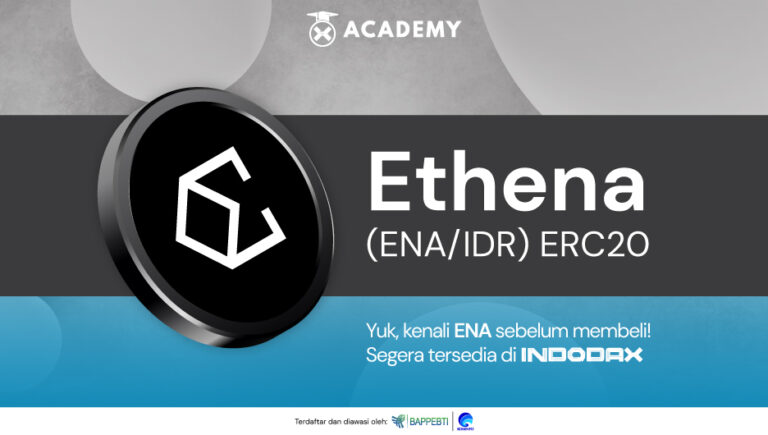To create products and popularity in AI (Artificial Intelligence) and crypto, the science that technology developers need to pay attention to is Human-Computer Interaction (HCI). Its main focus is understanding how humans interact with computer technology and designing technology that enables better and more efficient interactions.
HCI studies include aspects such as user interface design, user experience, multisensory interactions, and psychological factors that influence how humans interact with computer systems. On the other hand, crypto is a form of digital asset that uses cryptographic technology to secure transactions, control the creation of new units, and verify asset transfers. One of the most well-known forms of crypto is Bitcoin, but there are thousands of other digital assets, each with unique characteristics and purposes.
With rapid growth and continued innovation, crypto has changed how we view finance and technology. Although challenges and uncertainty remain, crypto continues to strengthen its position as an integral part of the future of the global digital economy.
So, to understand more about what Human-Computer Interaction (HCI) is, its function, principles, and scope, for example, the difference between HCI and UX, and its popularity in the world of AI and crypto, read more below!
What is Human-Computer Interaction (HCI)?
As mentioned earlier, Human-Computer Interaction (HCI) is a cross-disciplinary discipline that examines how humans interact with computers and other technology. Initially emerging in the 1980s, HCI has become a major focus in the world of computer science and design.
In HCI, the main focus is on enabling humans to use computers more efficiently and effectively. The goal is to understand and improve interactions between users and computers, including the interface, hardware, software, and context surrounding those interactions. The HCI field of study covers a wide range of topics, from system design, system evaluation, hardware and software, and user mental and physical processes. Human aspects, such as ergonomics, cognitive psychology, and graphic design, are also considered in the context of HCI.
It is important to underline that HCI aims to understand the complex relationship between humans and computers. This knowledge is used to design technology that is both better in terms of functionality and user-friendly.
By understanding user needs and behavior, HCI helps create more intuitive, efficient, and satisfying interfaces, enhancing the user experience with modern technology.
Getting to Know the Function of Human-Computer Interaction (HCI)

According to the book Visual Imaging of Urban Areas: System Development Techniques by Herry Santosa (2019), HCI has the following main functions, including:
1. Interface Design Methodology and Process
HCI involves the methodology and processes used to design effective and intuitive user interfaces. This includes design approaches considering user needs and ensuring a good connection between humans and technology.
2. Interface Implementation
HCI provides methods and techniques for implementing designed user interfaces. This involves implementing interface design into a computer system, including coding and organizing interface interactions.
3. Interface Evaluation and Comparison
HCI includes techniques for evaluating and comparing existing user interfaces. The evaluation helps ensure that the interface can be used efficiently and satisfactorily by users and compares the performance of different interfaces.
4. Development of New Interfaces and Interaction Techniques
One of HCI’s roles is to develop innovative new interfaces and better interaction techniques. This involves continuous research and development to create a better and more efficient user experience.
5. Development of Descriptive, Predictive Models and Interaction Theory
HCI involves the development of descriptive and predictive models that describe human interactions with technology. This includes developing theories about how humans interact with computer systems and how computer systems can understand human cognitive models. The main goal of HCI in the future is to design computer systems that reduce the barriers between humans’ understanding of their goals and desires and the computer system’s understanding of the user’s role. In this way, HCI aims to create a more intuitive, efficient, and satisfying user interface, optimizing the relationship between humans and technology.
HCI Principles and Scope
HCI is known to follow several fundamental principles that help experts design and assess interactive systems. Following these principles helps design interactive systems that meet user needs and create satisfying and productive experiences. The following are 4 main HCI principles that are often used as a basis for developing interactive systems, including:
-
Focus on Users
This principle places the user at the center of attention in system design. Hardware and software must be designed to fully understand user needs, capabilities, and comfort. This involves user demographic research, ethnographic studies, and user testing to understand their preferences and needs better.
-
Performance and Ease of Use
The system must be designed to make it easy for users to learn and use. This includes creating an intuitive, responsive, and efficient interface. The system must also provide clear feedback to users about the status of operations and the next steps that need to be taken.
-
System Flexibility
The system must be very flexible to accommodate different types of users with varying needs. This can include providing different configuration options, enabling personalization, and supporting various input and output methods.
-
Reliable Design
The system must also be trustworthy and safe to use. Users must feel confident and safe when interacting with the system. Data security, privacy, and system stability are of primary concern, ensuring that the system is reliable and does not cause harm or confusion to users. Meanwhile, the scope of HCI includes the various elements below and aims to optimize interactions between humans and technology by considering all related factors. The scope of HCI involves the following components, namely:
-
-
Human
-
This includes various aspects such as ergonomics, anthropology, psychology, individual background, ability to manage information, and other human-related factors.
-
-
Computer
-
This involves technical aspects, including hardware, software, software engineering, intelligent systems, and other information systems.
-
-
Interaction
-
An important bridge between humans and computers is the user interface. This includes interface design, navigation, labeling, menus, and other elements that facilitate interaction.
-
-
Activity
-
Activities highlight how users perform tasks, the goals they hope to achieve through those activities, their comfort level in executing activities, and other elements related to task execution.
-
-
Work Environment
-
The environment in which human-computer interaction occurs is also part of the scope of HCI. This includes aspects such as the physical conditions and resources available in the environment.
The Example of Human-Computer Interaction (HCI)

HCI is a concept that involves people in everyday interactions with technological devices. The following examples show how important HCI is in ensuring efficient, intuitive, and satisfying interactions between humans and the technology we use every day. The following are some concrete examples of how HCI is present in life, namely:
1. Smartphone use
Every time we use a smartphone, we interact with HCI. Starting from opening applications by sliding your finger to typing text messages to using voice recognition features, everything is part of our HCI experience.
2. Operating a computer
The way we use a mouse and keyboard to navigate an operating system, run software, or browse the internet are also examples of common HCI interactions.
3. Automated Teller Machine (ATM)
ATM is a clear example of good HCI. The user interface design allows people to carry out various financial transactions easily and safely.
4. Video Games
HCI is involved in video game design. How game controllers are designed, how players interact with game elements, to the artificial intelligence that drives non-player characters all involve aspects of HCI.
5. Navigation System
GPS systems used in travel also involve HCI. Interface design, voice prompts, and system response to user input are concrete examples of HCI applications in everyday life.
6. Virtual Assistant
Virtual assistants like Siri, Google Assistant, and Alexa use HCI principles. They are designed to understand voice commands and interact with users naturally, creating a seamless user experience.
Get to know the difference between HCI and UX
HCI and User Experience (UX) are two concepts that are often used together, but they have significant differences in the space of design and human interaction with technology. There are various differences between Human-Computer Interaction (HCI) and UX that you need to know, namely:
1. Human-Computer Interaction (HCI)
HCI is a field of study and practice focusing on computer interface design. It involves a scientific approach that covers both technical and human aspects of human interaction with technology. This discipline pays attention to aspects of cognitive psychology and user behavior, aiming to make human interaction with computers easier, more efficient, and more satisfying. HCI explores how humans interact with technology, examining everything from navigation to user responses to systems.
2. User Experience (UX)
Meanwhile, UX is a broader concept that covers the entire user experience with a product or service. It involves the user’s emotions, perceptions, physical and psychological responses, and satisfaction throughout the interaction with the product or service.
UX is not just limited to interface design; it considers elements such as branding, graphic design, content, navigation, and product features. The main focus of UX is to create an overall experience that is enjoyable, efficient, and satisfying for users. Therefore, it can be concluded that HCI focuses on human interaction with computers and technology, while UX covers the user’s overall experience with a product or service.
Although different in scope, these two concepts work together to create a satisfying and effective user experience. HCI provides the technical foundation and UX manages the user’s comprehensive experience with the product/service.
The Popularity of HCI in the World of AI and Crypto
HCI is becoming increasingly important in developing and applying advanced technologies, such as AI (Artificial Intelligence) and crypto. This is because both technologies require efficient and intuitive interaction between humans and complex systems. The following are the respective popularity of HCI in the world of AI and crypto that you need to know, namely:
1. Popularity of HCI in AI
HCI has a central role in user-focused AI system design. For example, in creating a virtual assistant or chatbot, HCI helps design how the bot interacts with users, including natural language recognition, responsiveness, and providing useful feedback. Additionally, HCI also helps design AI user interfaces that are simple and easy for users to understand while implementing the principles of ethics and transparency in AI design.
2. Popularity of HCI in Crypto
HCI also plays a key role in designing crypto asset applications and platforms. Here, HCI helps create user interfaces that enable people to easily buy, sell, and manage crypto assets. Since blockchain and crypto technologies are often complex and difficult to understand, HCI has a vital role in making these technologies more accessible and utilized by the general public.
With the rapid development of technology, the role of HCI in AI and crypto is becoming increasingly important. Applying HCI principles allows more user-friendly, efficient, and ethical systems to be designed. This will ensure that more people can enjoy and utilize this advanced technology, bridging the gap between technological complexity and ease of use.
Conclusion
In conclusion, Human-Computer Interaction, or HCI, is important in facilitating human interaction with crypto. HCI helps design user interfaces that are intuitive and easy to understand, allowing users to smoothly buy, sell, and manage crypto assets.
By considering user needs and preferences, HCI ensures users can interact with crypto assets confidently and efficiently. On the other hand, good user interface design is essential in ensuring a satisfactory user experience. The user-friendly and easy-to-navigate interface makes users comfortable and confident using crypto. Additionally, attention to security is essential. By integrating the latest security technology, users can feel confident that their transactions and privacy are safe.
So, now you understand what Human-Computer Interaction (HCI) is, its function, principles, and scope, for example, the difference between HCI and UX, and its popularity in the world of AI and crypto. Furthermore, you can also read other interesting articles, such as Chat GPT only on INDODAX Academy. As a reminder, INDODAX Academy is the right platform for you to thoroughly explore the world of blockchain and crypto assets. By understanding the concepts of crypto assets, you will be able to start investing in crypto at INDODAX as a legal and trusted crypto asset buying and selling platform.
Let’s increase your knowledge about the world of crypto assets with INDODAX Academy!








